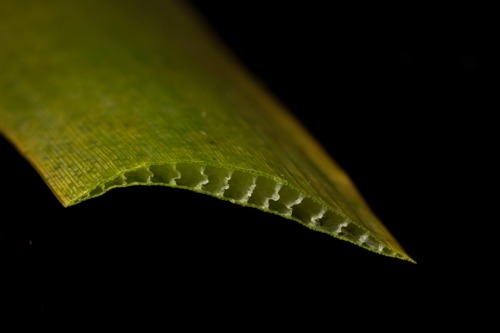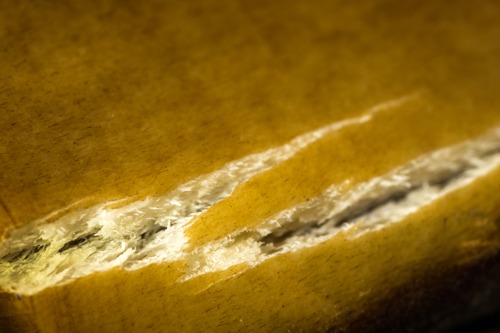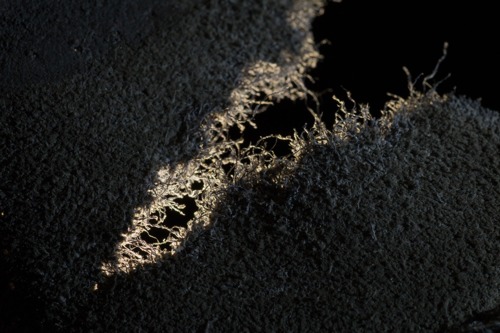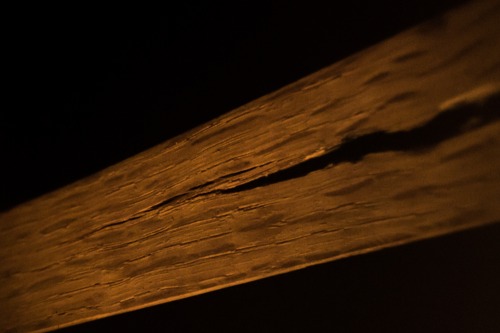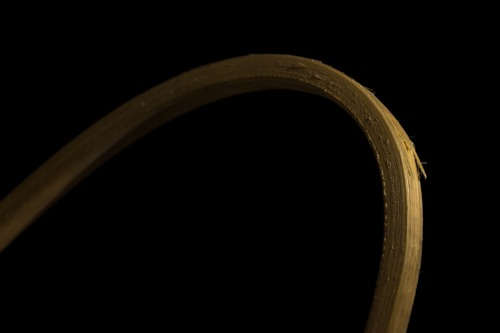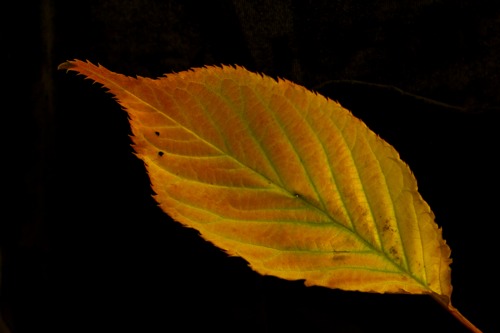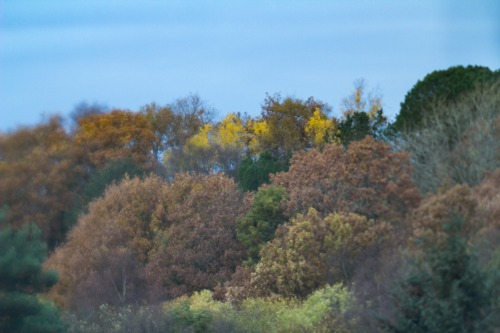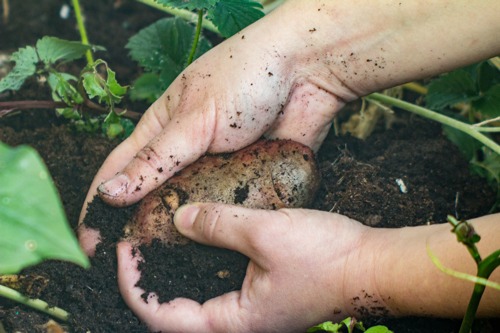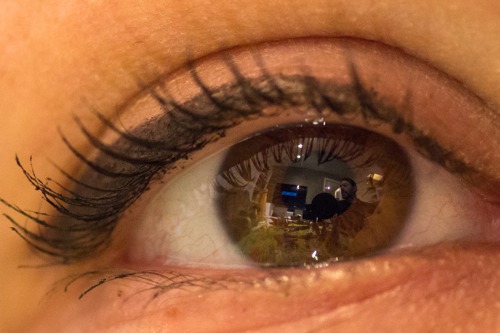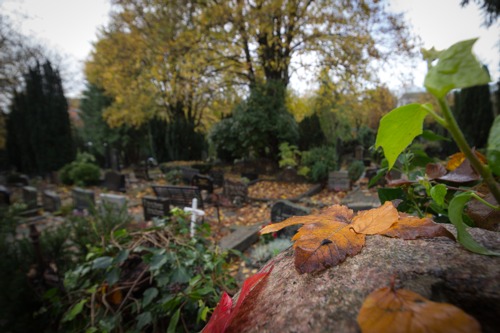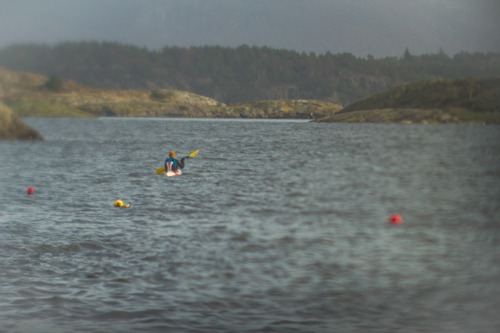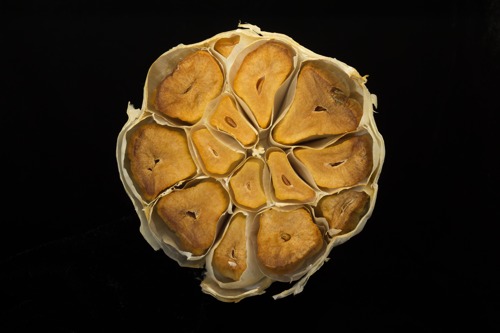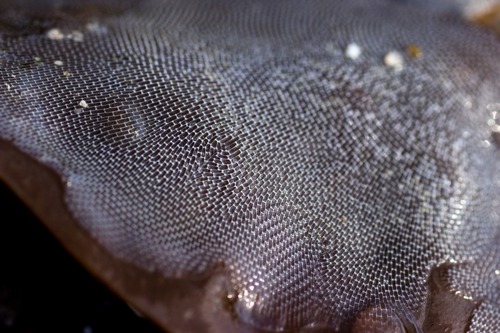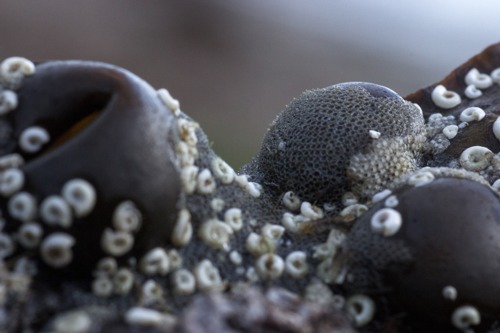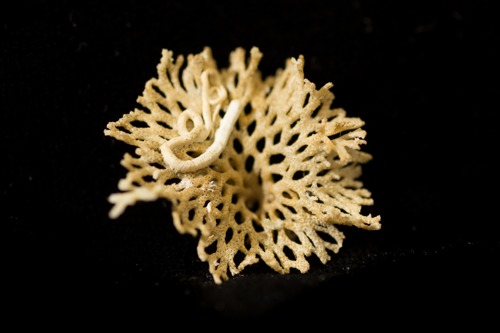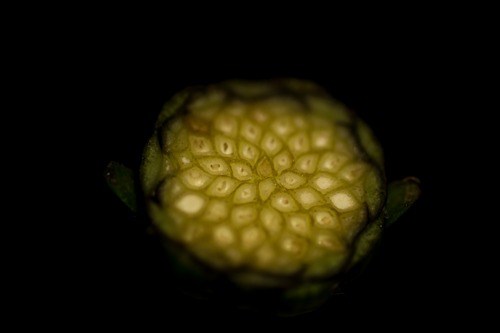The insect point of view, natural composites and other Sagem lenses - Mimesis 2020 -
PROJECT MOTIVATION I acquired in October 2020 two large lenses originally manufactured by SAGEM, now Safran. I looked on the net to find what was their application, but what I found instead was the Mimesis contest. I really liked the theme since in most of my work, I do mimesis all the time: to solve a new problem I typically look for (and find) existing solutions from different fields. I believe we still have a lot to learn from the vast mass of engineering produced by biological evolution. All photos have been shot by the author in Stavanger, Norway, between October 26 and November 4 2020, specifically for the Mimesis contest. I strived to seek innovative content and hope some images will provide inspiration for new technological implementations. I don’t have the patience or money to go hunting for the most bizarre insects in tropical forests (and anyway we are all quarantined), so most of the images are from common life forms and products that can be readily found in the house or in city parks. The amount of treasures hidden under our nose is amazing. The SAGEM lenses, mounted on a custom made bellows rail, have been used in four of the images; the rest are with commercial macro or wide camera lenses. One image (Fly eye in subjective) has been taken with another optical system built for the purpose. Between the many ideas at the beginning, four themes have been developed: 1 - Exagon +/- epsilon - 6 images 2 - One specific animal - 4 images 3 - Autumn colors - 3 images 4- Toughness of composites - 5 images Wish to thank: Joanna Tatusko, the hands and eye model; as well as critical steering about lightning and shoots selection. Anke from Astrooptik DE, provided the initial motivation with the two Sagem lenses. Participants of the forum binomania.it for the insect eye shot inspiration. Svithun Husflidslaget Stavanger NO, preparation of the samples. AUTHOR PRESENTATION My name is Giorgio Pattarini, am an applied physicist born in Italy and currently living in Norway. I am passionate about the mesoscopic world and its enormous variety of forms, being mineral, biological or artificial. Favourite themes are metallic coatings and rusting, mechanical design optimization, muds and soft matter, our meaning in the world, small critters and functional textures. I use photography as a tool to illustrate the enormously complex beauty of our world; a lot of work on the optics side, with the main focus on obtaining a clear illustration of the phenomenon of study. Theme 1: HEXAGONE +/- EPSILON While humans like squares, in biology the most common geometry for tesselating surfaces is by hexagons; this likely originates spontaneously by the packing of spherical cells over a plane. And when the surface has a curvature, complete covering is achieved by adding or removing sides, leading to a few pentagons or heptagons. I’m not sure what inspirations natural tessellations can provide; after all, covering by squares is much more efficient from a design and manufacturing perspective. And if we really need to cover a sphere with hexagons and pentagons, well, football balls have been devised already, long time ago. Anyway! Hexagons minimize the contour, as probably do pentagons and heptagons when the surface is curved. Are truly optimal if we need to place objects somewhere, like windmills. We may use the number of pentagons and heptagons to measure the curvature of a surface; sounds cumbersome but may provide a breakthrough somewhere. Truth here is, biological tessellations simply make for beautiful patterns to photograph. 1_1: UNE FLEUR! MIAM MIAM. INSECT EYE IN SUBJECTIVE If you have ever wondered about how the world may look like from an insect point of view, here it is. This is a single shot of the insect view, the image produced by the thousand ommatidia as projected over the sensory cells. It has been taken through a mounted sirfid eye lens with a specially constructed fisheye, capturing the insect wide field of view from inside. How can this image inspire new technologies? The insect eye has been studied thoroughly, and the lenses hold no more secrets. More mysteries remain on the functioning of the sensory cells and the neural pathways to elaborate the multiple images; but that’s not the subject of this photo. The image may serve as an immediate visual guideline for programmers that need to integrate efficiently the image streams from different cameras; or as a suggestion on how an image from a single sensor, multiple lens image may be interpreted. Anyway, I had this idea and searched extensively but couldn’t find this image being taken before; so I had to make it. It has taken an extensive amount of time and resources, but at the end it worked, hope you all enjoy it. They are not all hexagons! I’ve seen at least one pentagon. Subject: Eye lenses of a sirfid insect, likely Eristalis tenax, about 1x1mm. Flower likely Asteracea, yellow garden cultivar, about 70mm diameter. Lens: Insect lenses: about 1000 pieces 0,07mm FL, f/2.8, on an approximately spherical surface 1,6mm radius. Maker: Eristalis tenax. Effective field of view used about 120 degrees. Projection to sensor: fisheye system of own construction; not disclosed. In case of interest I would disclose the methods used. 1_2: BETTER DONE THAN PERFECT - SUNFLOWER’S SPIRALS T he spirals in sunflowers, daisies and other flowers are a wonderful display of mathematics from the natural world. I’ve always wondered: those spirals should converge in the center, with even smaller seeds, like in an Escher drawing. Is that really so? Do the spirals converge with smaller and smaller seeds? No. The infinitesimal doesn’t exist (at least in biology). Once the forming ovaries approach the center, they become too near to form nice spirals, and pack together “as it comes” breaking the elegant symmetry of the periphery. This can be understood by thinking of the development of the flower from the multiplicating meristem, where cells find their place by a fight for place; happens that if the cells are many, they fit together into nice patterns, while in the centre, they are few remaining with little place, and little care for harmony. What to learn from here? Efficiency is preferable to perfection; pure mathematics doesn’t exist in reality, where it has to live with many compromises. About compromises, the flower in question is not an actual sunflower, but probably an aster, from a nearby garden (the same as from the 1_1 image); spirals are the same anyway. Subject: Flower, likely Asteracea, yellow garden cultivar. Section right above flower base. Lens: Macro 90mm f/2.8 1_3 REGULAR INFLATION MEETINGS - CORAL This is a coral skeleton, growth over the years over a forgotten crab net. This is a very different example than the vegetal one, where the hexagonal pattern originated from packed cells. Here the small polyps build progressively the structure, from the centre toward the outside. The result is a network with almost regular loops; each loop has been formed sequentially by a branch bifurcation, then a fusion with the two nearby branches, bifurcation again, finally joining again the original branch. This network structure assures strength and durability; how do the small polyps devise where to grow, so to form - after years - a regular net? A further curiosity is that the formed surface is hyperbolic, with negative curvature. Henceforth, there should be some heptagons. Subject: Coral skeleton from Stavanger fjord, unidentified species; another wiggly unidentified beast grew over it. Lens: Macro 90mm f/5.6 1_4 OVER THE SPHERE - BEASTS OVER WEED Some nice animals grown over bubble weed. What to learn? Adapt to the place where you are, and fight for a place. Subject: unidentified animal shell over norwegian bubble seaweed. Lens Sagem 569937 350mm at f/9, short distance, about 1:5 reproduction ratio. 1_5 GO WHERE YOU CAN - REGULAR BEASTS OVER WEED A beautiful pattern found over beached large Laminaria seaweed leaves. A staggered rectangular (= straightened hexagonal) pattern has been grown by some unidentified animals. The pattern was too beautiful to let it away. What to learn: start somewhere and fill all the place. Make walls rectangular, pentagonal, hexagonal or heptagonal, just go. Subject: unidentified cell-building colony over Laminaria seaweed. Lens: Macro 90mm f/16. 1_6 CULINARY SUGGESTION - GARLIC This is a garlic head baked in the oven. The cloves developed in the meristem and display a pseudo-hexagonal pattern. What technology can be inspired from this photo? The technology of baking garlic; it comes out delicious, not too strong. To all engineers: try it! Subject: Garlic head, Allium sativum, baked. Lens: Macro 90mm f/10. Theme 2: ONE SPECIFIC ANIMAL When thinking about nature, we picture something outside, separated from the human, artificial world made of roads, houses and cities. However we ourselves, as humans, are already inside nature, a part of it. Often artificial and natural are seen as opposite; but we are too the fruit of evolution; in our technological creations, natural materials - wood, leather, chemicals - have been and still are essentials. Our cities very well resemble very large termite nests, and we still rely critically, for the survival of the modern society, on our animal powers - reproduction, metabolism, thinking, immunity, hand-eye coordination. This series of images wish to provide technological inspiration to, and from, one specific animal: Homo sapiens. The initial plan was to take photos of technological creations - planes, ships, cranes, engines - together with their biological analogs, like seagulls, ducks, trees, inner organs; but the task revealed daunting, and seagulls really don’t want to align correctly (and dangerously) with a taking off plane. I reverted to the simpler, direct depiction of the source and maker of all artificial creations - our own human body, adult phenotype unit, between the many emerged from some billions years of evolution. 2_1: WANDERING THE SEAS - HOMO SAPIENS Actually this is just a tilt-shift shot with the Sagem lenses that came out well. Rationale invented afterwards: the image illustrates the smallness of a human, advancing by sole muscular power through the sea. A few artificial appendages: a hull, a paddle, some clothes; the same since tens of thousands of years. That’s how we got to Great Britain, Indonesia or Australia, when we weren’t much more than packs of curious monkeys. Are we so different today? Subject: Homo sapiens paddling with a canoe over a huge amount of water. Lens Sagem 569937 350mm at f/3.5, long distance. 2_2: DISPOSABLE UNITS - DISPOSED UNITS OF LEAFS AND HOMO SAPIENS; ACTIVE LEAF UNITS AND A TINY SNAIL. Nature produces a lot of garbage: trees shed leaves every year; animals and plants are born, grow, reproduce and die, in a continuous cycle. We should not be ashamed of manufacturing disposable machines, nor should be afraid of our own death. Having a designed, finite lifespan is the natural golden standard since the advent of sexual reproduction and body metamorphosis. Despite the short lifespan of each unit, information acquired by each generation is transmitted, preserved, transformed and enlarged. Genotype is the time bridge for living beings; culture, language, books, ideas, standards, blueprints and code are the world of human ideas. Subject: Dead leaves of various trees, ivy (Hedera helyx) and other live trees, dead bodies of Homo sapiens (hidden, buried), one tiny snail of unidentified species. Lens: Wide Angle 10mm f/6.3 2_3: I EVOLVED, ERGO COGITO - HOMO SAPIENS EYE Among the innumerable biological achievements that still we don’t understand completely, there is our consciousness itself; the awareness of our being, the thinking built over the perceived image of the external world. Consciousness is natural, a powerful brain feature devised by evolutionary trial and error that improves the transmission of genes. Yet it is at the core of the artificial, this imaginary world built by humans out of observations, thoughts, words, ideas, modelling and classification of the physical world; last, a system that allows us a purpose, the planification of the future. Our consciousness should inspire us; not only to build functional “A.I.”s that can classify websites or read car licence plates; we need a living, collective understanding of what we are and how we could better build our future. Furthermore, on the practical side, the actual brain detailed functioning is still hiding some tough secrets that may provide enormous advances for the artificial computational methods. Subject: Homo sapiens eye; reflected by it, another Homo sapiens taking photos; while through the eye, it may be visible a Homo sapiens soul. Lens: Macro 90mm f/5.6 2_4: THE MOST VERSATILE APPENDAGE IN THE ANIMAL KINGDOM - HOMO SAPIENS HAND AND A POTATO Those are hands. All the artificial has been and is being built by them: hands forge metal, calibrate micrometers, plant and harvest potatoes. Hands design, build and operate machines; code is written by fingertips. We have built many different robots that mechanically can do the hand’s jobs - often better. Did the actual Homo sapiens hands become obsolete? There are a lot of features still to copy from this particular edition of the terrestrial vertebrate limbs; and are already, literally, in hour hands. Subject: Homo sapiens hands; a potato (Solanum tuberosum var. Folva) Lens: Sagem 569937 350mm f/9 at close distance (about 11:1 reproduction ratio) Theme 3: AUTUMN COLORS Nature offers an astonishing variation of forms and shapes to be photographed; but an even larger amount of engineering solutions accumulated through evolution is hidden into one simple word: biochemistry. How to visualize this molecular richness? One direct way is by color, our built-in spectrographic analysis tool, a narrow but easy peek into the electrons configuration of molecules. Big words; in practice it’s autumn and I’ve simply taken a few shots of the trees getting red, yellow, brown and finally shedding their leaves. 3_1: TO EACH ONE ITS RECYCLING METHOD - AUTUMN TREES Trees in autumn change color, each species with its specific hue. The tree is preparing to shed its leaves, and the pigments in the leaves get broken down, while the tree strive to retain and recycle precious nutrients for the next spring. There appear not to be a single pathway for this recycling, with each species having its timing and its own chemistry. This molecular diversity showcases itself in the varied colors of the autumn. Subject: trees of different species in autumn (Beech, Oak, Birch, Poplar, Maple, Pine, Cherry ...) Lens: Sagem 569937 350mm at f/3.5, mounted in tilt-shift. 3_2 ONE BOOKS OF BIOCHEMISTRY ANOTHER OF QUANTUM MOLECULAR DYNAMIC - MAPLE LEAF This is a maple leaf fallen in autumn. The marbled green and yellow colors suggest an incomplete and complicate dismantling of the chlorophyll. What are the enzymatic pathways followed, why is it marbled, why chlorophyll does not absorb green light and what is that gives the yellow hue? I don’t know, but I guess we will need at least one book of biochemistry and another on heavy molecular simulation, just to have a coarse description of what is going on. Subject: fallen Maple leaf - Likely Acer pseudoplatanus. Lens: Sagem 569937 350mm f/9 at close distance (1:6 reproduction ratio, near its optimal) 3_3 TWO BOOKS OF BIOCHEMISTRY AND ONE OF QUANTUM MOLECULAR DYNAMIC - CHERRY LEAF This is a cherry tree leaf fallen in autumn. The red and and yellow colors suggest an organized and sophisticated dismantling of the chlorophyll and other leaf substances. What are the enzymatic pathways followed, why chlorophyll does not absorb green light, what is that gives the yellow and red hues, how and why? I still don’t know, but I guess we will need at least a book of biochemistry and one of heavy molecular simulation, just to have a coarse description of what is going on about the green and the yellow. Plus one book to understand why and how of the red.. Subject: fallen cherry leaf - Likely Prunus serrulata Lens: Sagem 569937 350mm f/9 at close distance (1:10 reproduction ratio, near its optimal) Theme 4: TOUGHNESS OF COMPOSITES Development of artificial composite materials is today in a golden age; the extreme strength of artificial fibers allows us to fabricate new materials with unprecedented performances. However, when it comes to impact resistance, toughness and flexibility, we still have to rely on bulk materials like metals, plastics and elastomers. Our composites are not yet mature, performing way below the potential of their constituents. The positioning of the reinforcement fibers, their interlocking, the adhesion with the matrix, the control of cracks growth, those are the critical factors that can and need to be improved. Biological tissues instead, being built up from the molecular level, show an high degree of refinement in their micro and mesoscopic structure, resulting in lightweight and extremely tough materials. The images presented try to convey in a visual manner some solutions hidden in natural materials on how they fail progressively while holding structural integrity. 4_1: UNIDIRECTIONAL FIBERS CREEP - BAMBOO Bamboo is made mostly of longitudinal cellulose fibers; under bending, the weak links connecting parallel fibers move and allow shear, absorbing energy. The fibers on the external side of the curved beam started to fail by traction, while some fibers in the inner side buckled by compression in a curly pattern. The beam as whole is still in one piece and holding. The strength and flexibility of bamboo has been exploited by human engineering since prehistory and bamboo products are still manufactured in industrial proportions. Subject: Bamboo chopstick bent under hot steam. Likely from a Phyllostachys genera plant. Beam section 5x6 mm, total length 220mm, min radius of curvature 25mm. Lens: Macro 90mm f/16 4_2: CROSS LINKING - OAK Oak wood has a lightweight, porous structure of cellulose/lignine (plus a lot of tannines). As all woods, most of the fibers are aligned longitudinally, but in oak a significant proportion of the fibers form long bridges perpendicular to the main direction; furthermore the longitudinal fibers are not straight, following instead wavy patterns. When subject to longitudinal cracking, the cross fibers oppose direct resistance, while the waviness of the main longitudinal fibers helps spread the crack into several parallel cracks, distributing the stress into many small splitted beams that work efficiently under flexure. The bulk of the surrounding porous wood has very low stiffness and flexes easily, further reducing the load concentration. The thin plank pictured has been split open for ? of the length, but the remaining ? is holding unscathed. Most of the other wood types would have failed by complete, neat splitting. The compactness of Oak wood made it a fundamental constituent of European engineering, navies and militaries for millenia; until almost all of the natural oak forests had been depleted and its wood superseded by the mass production of steel. Subject: Oak plank, split wet. Likely from Quercus genera, unidentified specie. Plank 3mm thick, 35mm wide, 150mm long. Crack max open about 7mm. Lens: 2 pieces Sagem 569937 350mm at f/9 in symmetric configuration, 1:1. Image projected on tilt-shift screen, photographed with 90mm macro f/8. 4_3: CHOPPED STRAND MAT - LEATHER The skin of mammals is made of a seemingly random network of short, curly collagen fibers. Under tension and flexure this fabric can deform considerably; it is very pliable for small deformations while it stiffens progressively when reaching its strength limits. The already elastic collagen fibers are interwoven in a loose and redundant manner, and when the skin is pulled a large number of fibers get tensioned and aligned against the stress. Only the most tensioned strands fail, while the rest, having worked mostly elastically, can return in their original position once the stress is removed. Animal hide has been in use by humans since prehistory and is still considered today the best available material for several applications. Artificial materials such as felt and non-woven tissue have similar geometry, while laminated Kevlar bulletproof vests use a similar load distribution mechanism. Subject: Cow skin, processed as suede, from an old shoe. Thickness about 0,8mm. Lens: Macro 90mm f/11. 4_4: MINERAL FILLER ADHESION - DEER ANTLER The antlers of deers have a structure similar to bones, built of hardened collagen proteins embedding platelets of calcium carbonate as mineral filler, which acts as a stiffener. In the artificial plastics, adding a filler typically reduces toughness and impact resistance; under deformation the stress concentrates at the corners of the mineral particles, leading to failure either by detachment of the matrix from the particle, or by cracking of the particle. Both processes dissipate little energy. In the antler material instead, the mineral-matrix interface doesn’t detach and the filler crystals probably don’t crack; the shear and separation happens between collagen sheets, involves large plastic deformations and massive energy absorption. The sample pictured had to be kept clamped open during shooting (clamps not visible…) otherwise it would have sprung back closed despite the extensive tear. Antlers are among the most impact-resistant natural materials known. Deers with fragile antlers have been wed out by selection. Subject: Deer horn, sliced and bent. Naturally shed from a red deer, Cervus elaphus. Thickness about 2mm; the small flakes are about 1mm long and 0,1mm thick. Lens: Macro 90mm f/25 4_5: BELLOW SPARS - REED LEAF Here the transverse section of a common reed leaf. The two external surfaces, which hold most of the leaf material and the load, are connected by thin spars (actually regularly interrupted by transoms). Beside the nice profile of the leaf, it is interesting to see that the spars are not straight, but curved as a bellow. When the leaf is bent, the spars compress, reducing the leaf thickness and allowing a tighter bent radius than if they were stiff, avoiding a catastrophic buckling. This solution is already in use in many artificial products; for example, the common corrugated cardboard exhibits the same behavior under compression. Extruded polycarbonate panels may benefit from this solution too. Subject: Common massette / reed - Typha latifolia leaf, cross section. Thickness 3mm, width 18mm. Lens: Macro 90mm f/something






